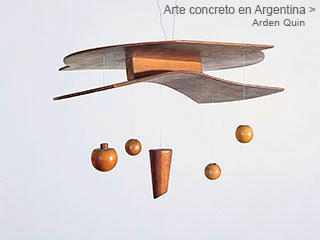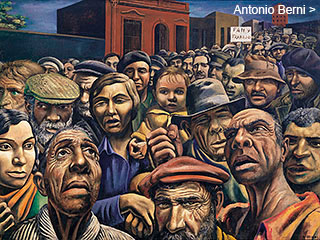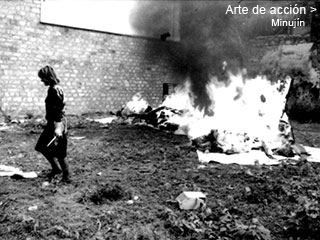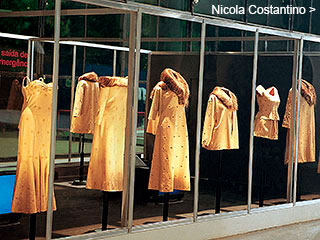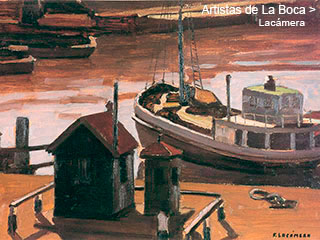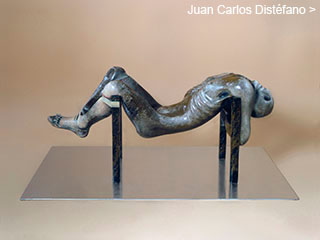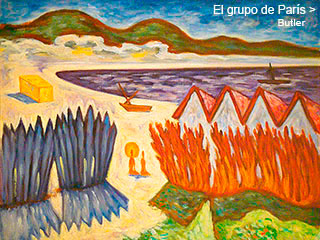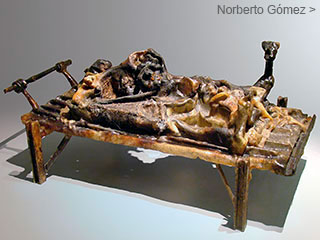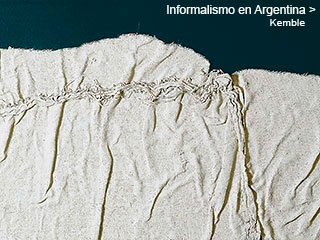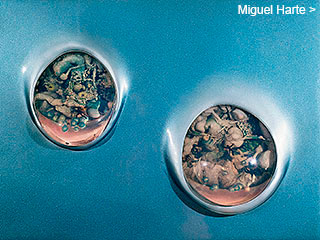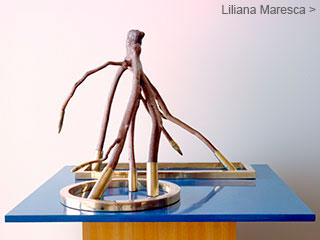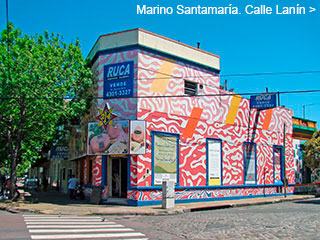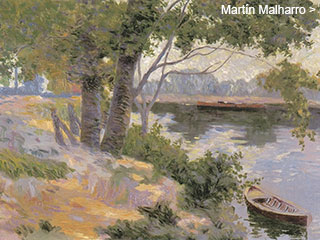Menú
Algunos dossiers
Concrete Art
in Argentina
in Argentina
by
Adriana Lauria
January 2003
January 2003
Abstraction asserted itself in Argentina through the achievements of groups such as Arte Concreto-Invención, Madí and Perceptismo, which developed their activity since the second half of the 1940s. These groups constituted the first organized national avant-garde and made their aesthetics known to the public through exhibitions, magazines, manifestoes, leaflets, lectures, etc.
Documents
Inventionist M.
Inventionist Manifesto. in Arte Concreto-Invención magazine. Buenos Aires, August 1946, No. 1, p. 8.
The artistic age of representative fiction gets to an end. Man turns gradually insensitive to illusory images. That is to say, he progresses about his integration with the world. The ancient phantasmagorias no longer satisfy the aesthetical appetites of the new man, formed in a reality that has demanded from him his total presence, without reserve.
The prehistory of human spirit is thus brought to a close.
A scientific aesthetics will replace the millenary, speculative and idealistic aesthetics. Considerations about the Beauty no longer have a sense. The Metaphysics of the Beauty is dead out of parching. The physics of Beauty takes control now.
There is nothing esoteric in art; those who claim themselves “initiate” are swindlers.
Representative art shows static “realities”, restrained in abstract terms. For every representative art has been abstract art. Only because of an idealistic misunderstanding the non-representative experiences were called abstract. In fact, these experiences –with or without awareness about it– led the way in a sense opposite to abstraction; the results of the latter, which have been an exaltation of painting’s concrete values, categorically prove it. The battle fought for the abstract art is, ultimately, the battle for the Concrete invention.
Representative art tends to muffle man’s cognitive energy, to divert him from his own power.
Representative art’s raw material has always been illusion.
Illusion of space.
Illusion of expression.
Illusion of reality.
Illusion of motion.
Illusion of expression.
Illusion of reality.
Illusion of motion.
A formidable mirage from which man has always come back deceived, weakened.
Concrete art, instead, exalts Being, for it carries it out.
An art of act; it generates the will to act.
Shall poems and paintings never serve to justify a rejection to action, but, on the contrary, contribute to situate man in the world. We, Concrete artists, are not above any dispute. We are in every dispute. And there, in the front row.
No more art as a support to indifference. For the sake of an art that serves, from his own sphere, the new communion now rising in the world.
We carry out happy techniques. Only exhausted techniques nourish from sadness, resentment and confidentiality.
For the joy of invention. Against the ominous existentialist or romantic moth. [...] Against the sub-poets of the tiny sore and the little intimate drama. Against every elite art. For a collective art.
“Kill the optics”, the Surrealists have said, the last Mohicans of representation. EXALT THE OPTICS, we say.
The essential: surround man with real things, not phantoms.
The Concrete Art familiarizes man with a direct relationship with things, not with the fiction of things.
To a precise aesthetics, a precise techniques. The aesthetic function against “good taste”. The white function.
NEITHER SEARCHING FOR NOR FINDING: INVENTING.
Edgard Bayley, Antonio Caraduje, Simón Contreras, Manuel O. Espinosa, Alfredo Hlito, Enio lommi, Obdulio Landi, Raúl Lozza, R. V. D. Lozza, Tomás Maldonado, Alberto Molenberg, Primaldo Mónaco, Oscar Núñez, Lidy Prati, Jorge Souza, Matilde Werbin.
Manifesto published on the occasion of our first exhibition, performed at the Salón Peuser in March 1946.


